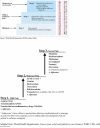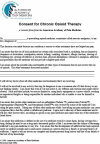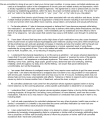Prescription drug abuse: epidemiology, regulatory issues, chronic pain management with narcotic analgesics
- PMID: 21356422
- PMCID: PMC3328297
- DOI: 10.1016/j.pop.2010.11.006
Prescription drug abuse: epidemiology, regulatory issues, chronic pain management with narcotic analgesics
Abstract
The epidemic of prescription drug abuse has reached a critical level, which has received national attention. This article provides insight into the epidemiology of prescription drug abuse, explains regulatory issues, and provides guidelines for the assessment and management of pain, particularly with long-term opioid therapy. Using informed consent forms, treatment agreements, and risk documentation tools and regularly monitoring the 4 A's help to educate patients and guide management based on treatment goals. By using universal precautions, and being aware of aberrant behaviors, physicians may feel more confident in identifying and addressing problematic behaviors.
Copyright © 2011 Elsevier Inc. All rights reserved.
Figures
References
-
- Substance Abuse and Mental Health Services Administration . Results from the 2006 Survey on Drug Use and Health: National Findings. Office of Applied Studies; Rockville (MD): 2007. DHHS publication SMA 07-4293.
-
- Savage SR, Joranson DE, Covington EC, et al. Definitions related to the medical use of opioids: Evolution towards universal agreement. J Pain Symptom Manage. 2003;26:655–67. - PubMed




